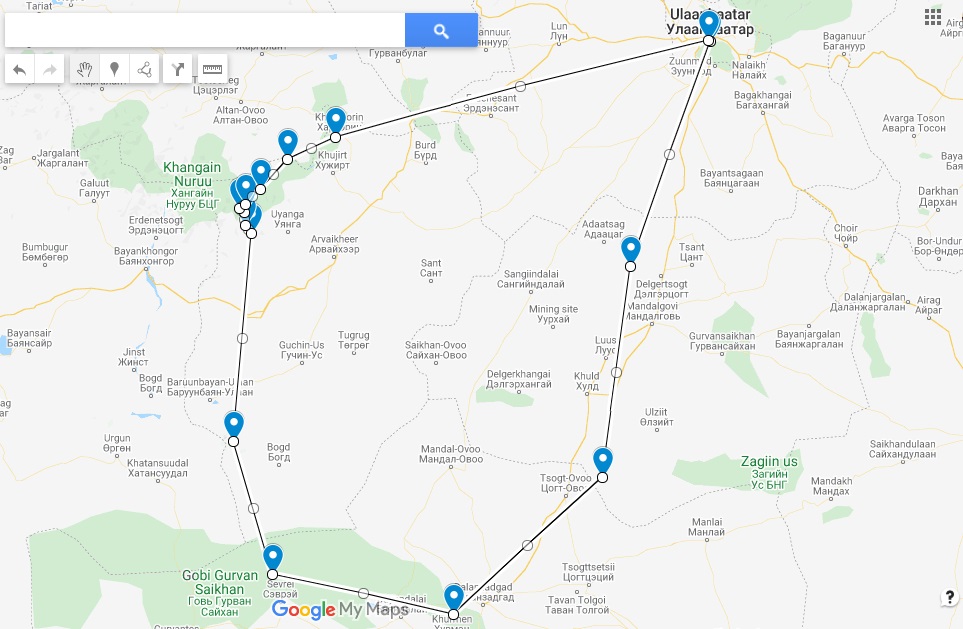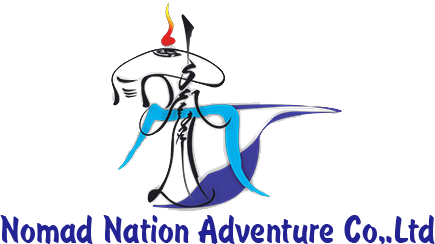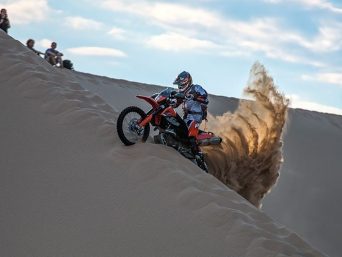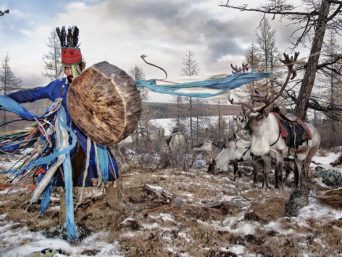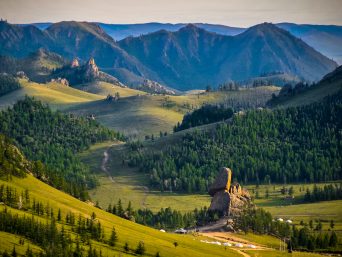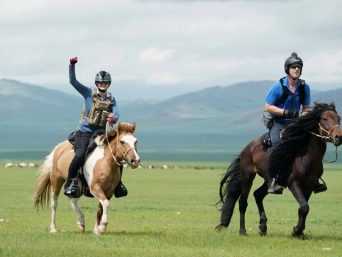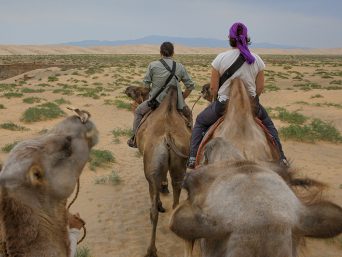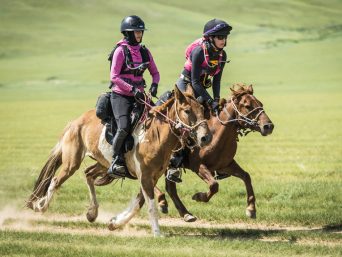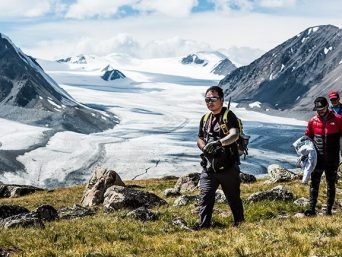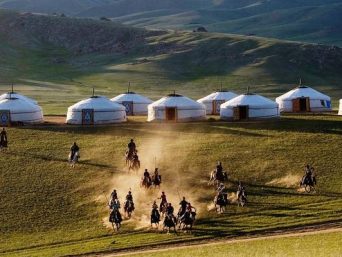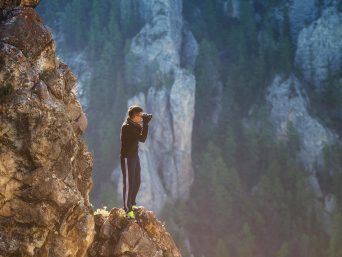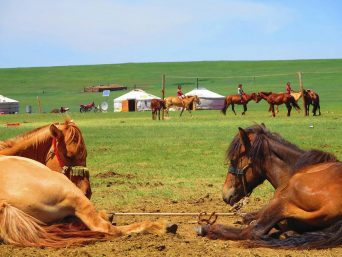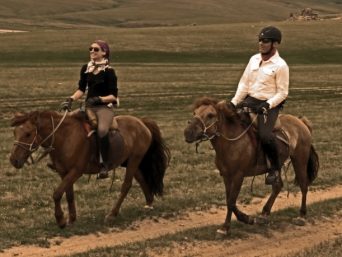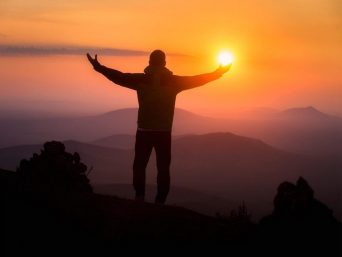Quite possible to modify this program according to your wishes!!!
Day – 1 : Arrive in Ulan Bator city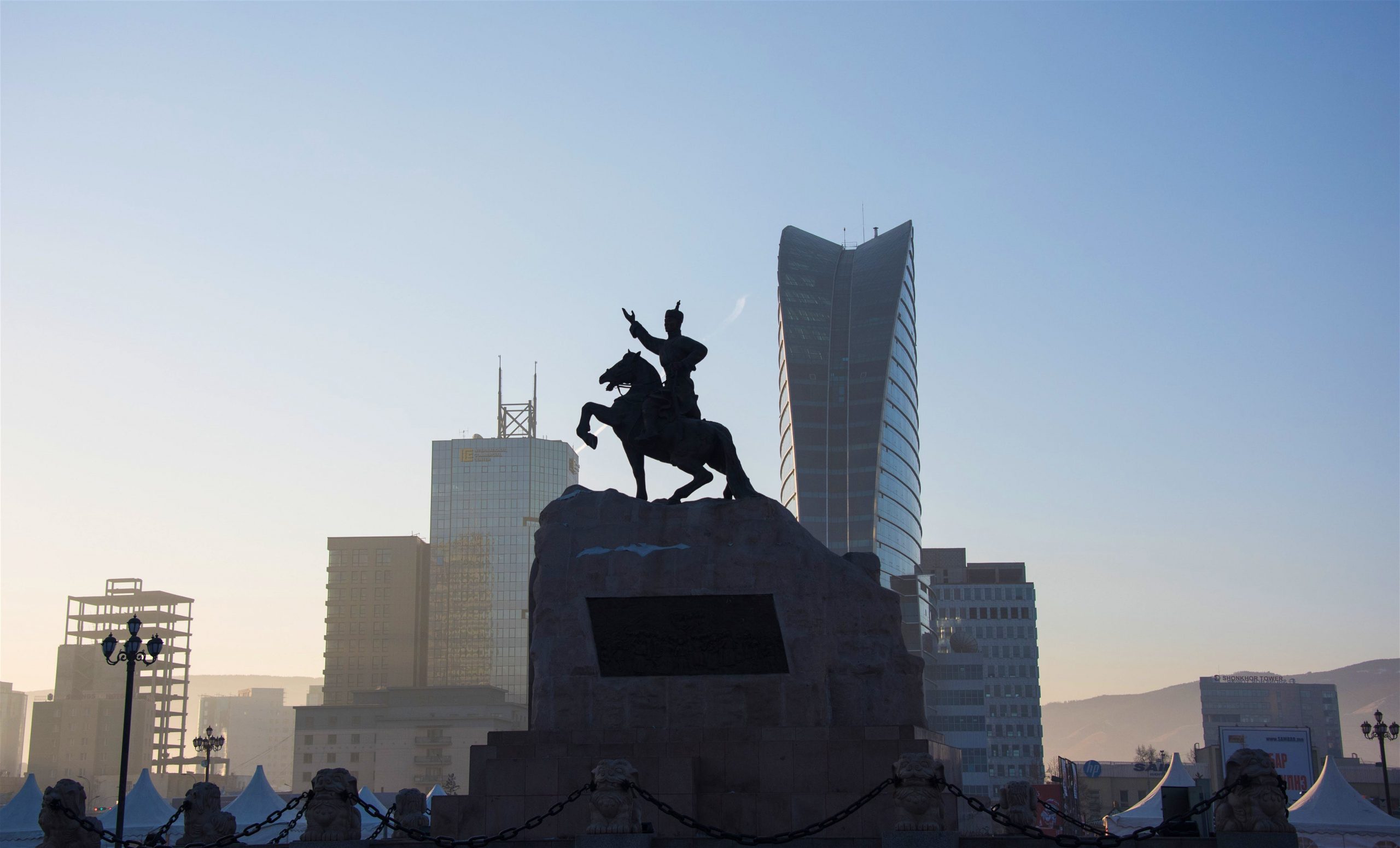
Arrival at Ulan Bator and transfer to your hotel for a warm shower and a moment to relax after this long flight (no lunch included).
Afternoon, visit of Gandantegchinlin Monastery. Built in 1809, the Gandantegchinlin Monastery – formerly known as the Gandan Monastery – is a Tibetan-style Buddhist monastery located in Ulan Bator. Its name of Tibetan origin can be translated as “Great site full of Joy”.Several hundred monks currently reside there.
It contains a statue of Megjid-Janraiseg (Bodhisattva Avalokiteshvara – called Chenrezig in Tibetan) by 25 meters high.
The original statue, made of copper, was erected in 1911 and was dismantled in 1937 by Soviet troops (the remains of the statue were subsequently used to make bullets during the siege of Leningrad). Following the fall of communist regimes, it was rebuilt in 1996 with donations of gold from Nepal and Japan.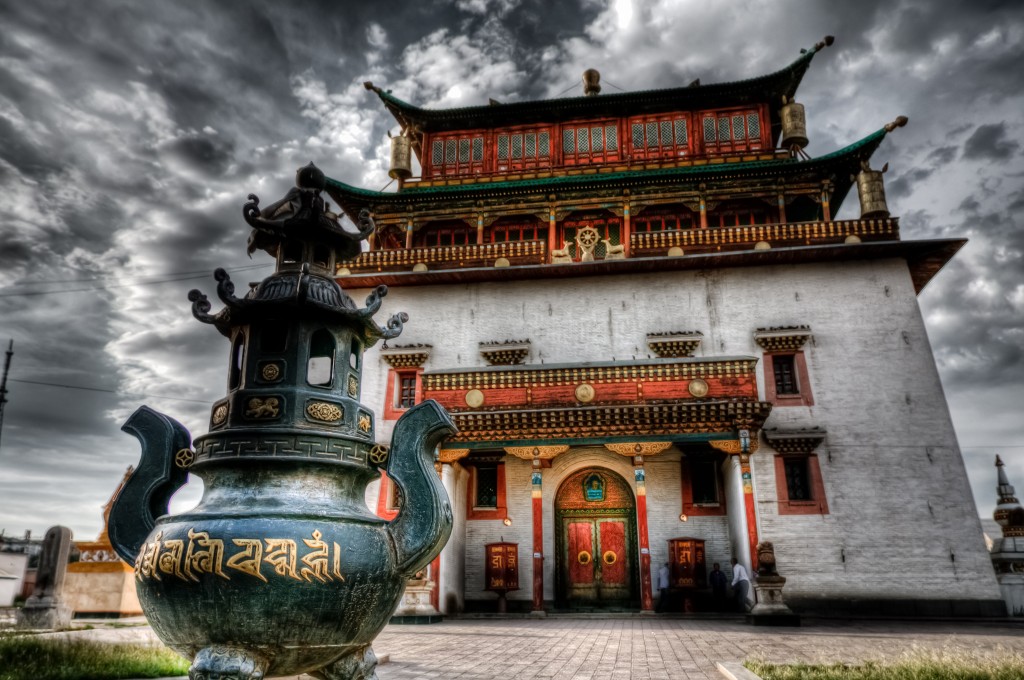
Adorned with gold and nearly 2,286 precious stones, the statue weighs over 20 tons and is covered with nearly 100 kg of silk clothing.
Visit of the National Museum of Mongolian History. The National Museum of Mongolian History tells the story of the country, from prehistoric times to today. In this museum there is also an ethnographic section with costumes and jewels from various ethnic groups of countries: Kazakhstan, Buriats, Clzemchins…
Dinner and overnight at the hotel.
Day – 2: Ulaanbaatar to Baga Gazriin Chuluu (200km)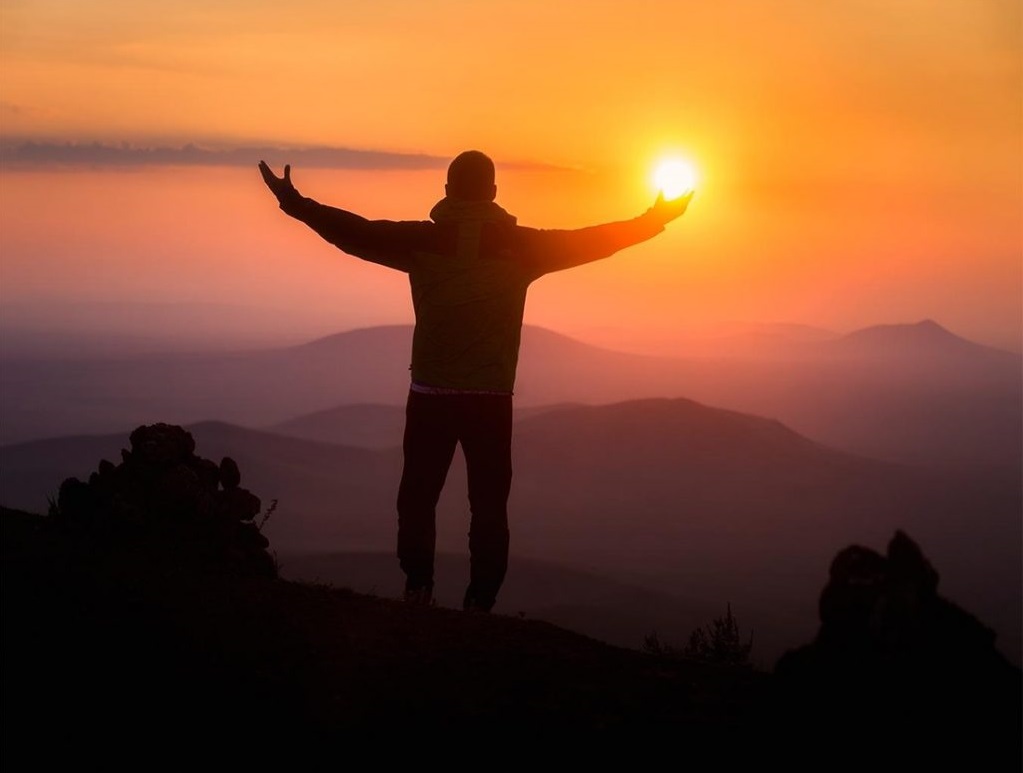
Breakfast at the hotel; we will start our journey to the Middle Gobi. Today we will travel about 200km to Baga Gazriin Chuluu. The most beautiful place where we camp.
Baga gazriin chuluu:
Located on 37 km northwest of Delgertsetsogt soum of Dundgovi aimag. Around 1768 meters high, granite stone zones an area of 300 km. There are many springs in the valleys as well as ancient tombs, cairns, rock paintings and monuments. There are many things to see in the Sudut canyon, the Jargalant Cave, the Eye medical spring, The Cave, the Hun tombs, and so on.
Planned activities: To visit eyes springs, Travel through National park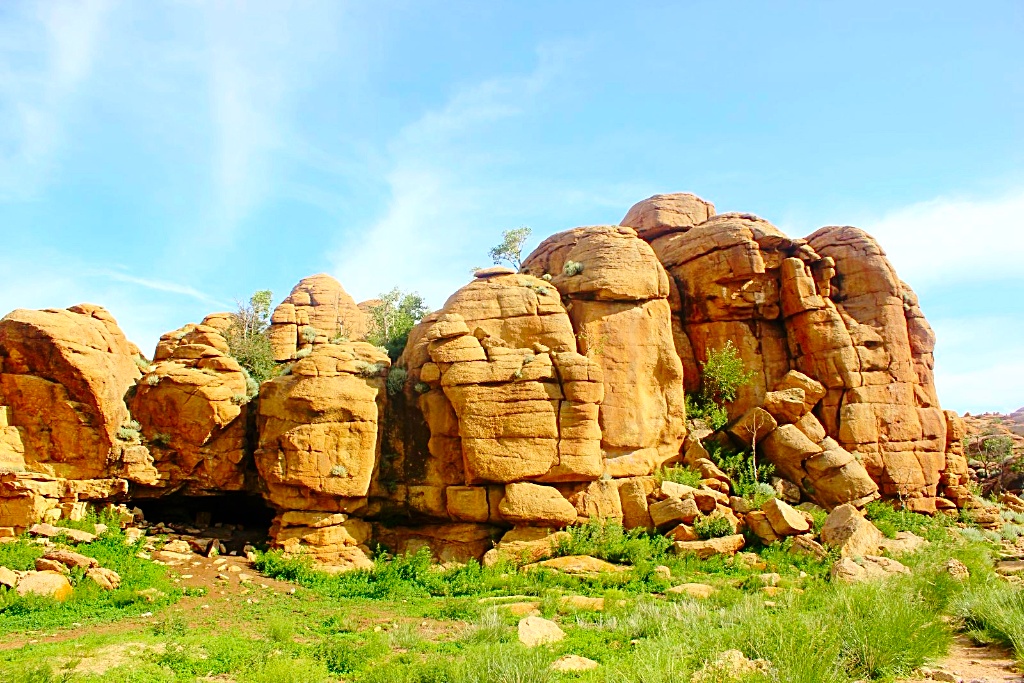
Lunch at a roadside restaurant.
Dinner and overnight bivouac
Day – 3 : Baga gazriin chuluu – Tsagaan Suvarga White stupa (300km)
Breakfast; we will visit to a wonderful place named Tsagaan Suvarga. 60 meter high canyon is stretching from the west to the east. Mother Nature’s beautiful formations. It might be similar to Grand Canyon in USA but so colorful. 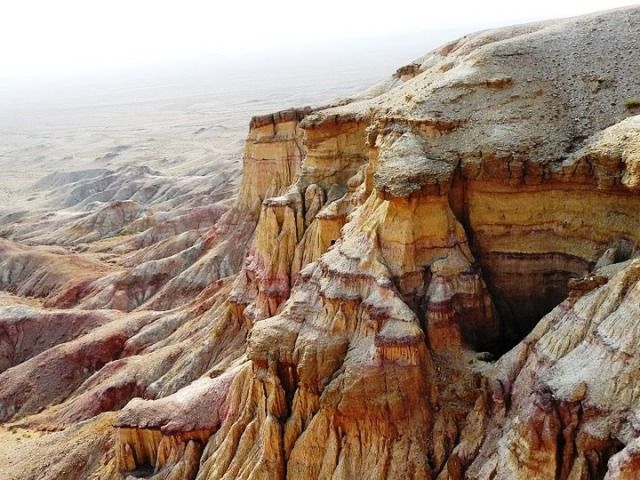 Feels like an ocean floor. Interesting facts, you might find fossils, fossil tree and red corals. We will camp over there.
Feels like an ocean floor. Interesting facts, you might find fossils, fossil tree and red corals. We will camp over there.
Planned activities: to walk in the cliffs of Tsagaan Suvarga White Stupa
Lunch at a roadside restaurant.
Dinner and overnight bivouac
Day – 4: Tsagaan Suvarga – Yoliin Am (180km)
Breakfast; our tour will continue on Yoliin Am in the east of the Govi Gurvan Saikhan area in Umnugovi province. There is a gorge in the Gobi and is characterized by iced up to July. It is home of rare animals.  When you arrive in the morning, you may see Argali, ibex, and leopard.
When you arrive in the morning, you may see Argali, ibex, and leopard.
Lunch at a roadside restaurant.
Planned activities: visit Yoliin am’s canyon.
Dinner and overnight at nomad family
Day 5 and 6: Yoliin am – Khongor sand (180km)
Today we will continue our journey in Khongor’s sand. Mongolian biggest sand hill on the first day of the day, we spent a tent in a beautiful place.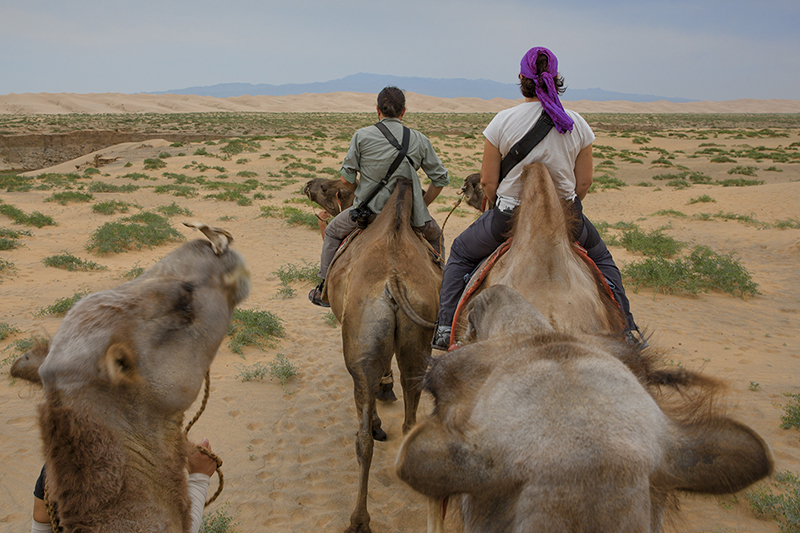
The site is one of Khongor‘s largest and most famous sand dunes, and the most important moment of our journey will be here. We will ride on the camels and ski board between the sand dunes. Enjoy on the musical sand dune to see sunset. We will be there 2 days.
Planned activities: Hiking between dunes, Sand board near Seruun spring, Camel tour,To visit Mongolian family
First night bivouac in the dunes, second night at the camp of yurts (2 to 4 people per yurt, with single beds, showers in a separate building).
Day – 7: Khongor Sand – Uush Shakhlaga (180km)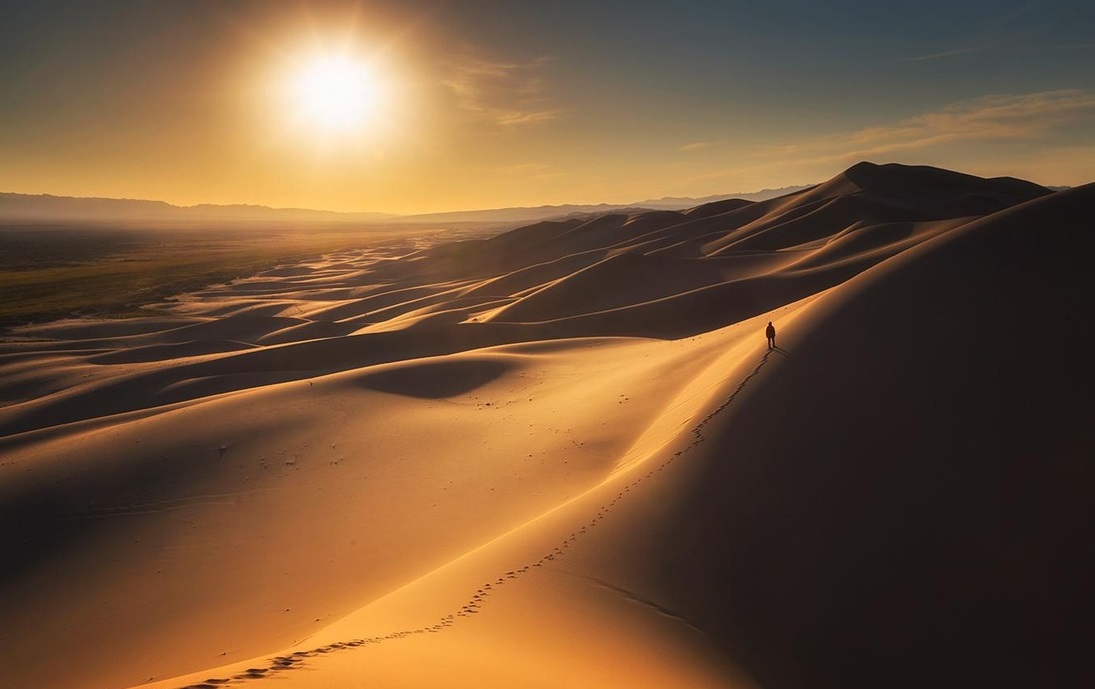
Breakfast, we continue our journey to the North and the Uush Shakhlaga.
In the morning, we discover petroglyphs that date back to the Bronze Age. After this visit, we will discover the 2 natural pyramids and cliffs in amazing formation that contain various natural minerals.
Picnic on the road
Planned activities: petroglyphs date from the Bronze Age, pyramids, cliffs
Dinner and overnight bivouac
Day – 8: Uush Shakhlaga – Valley of Shuranga (250km)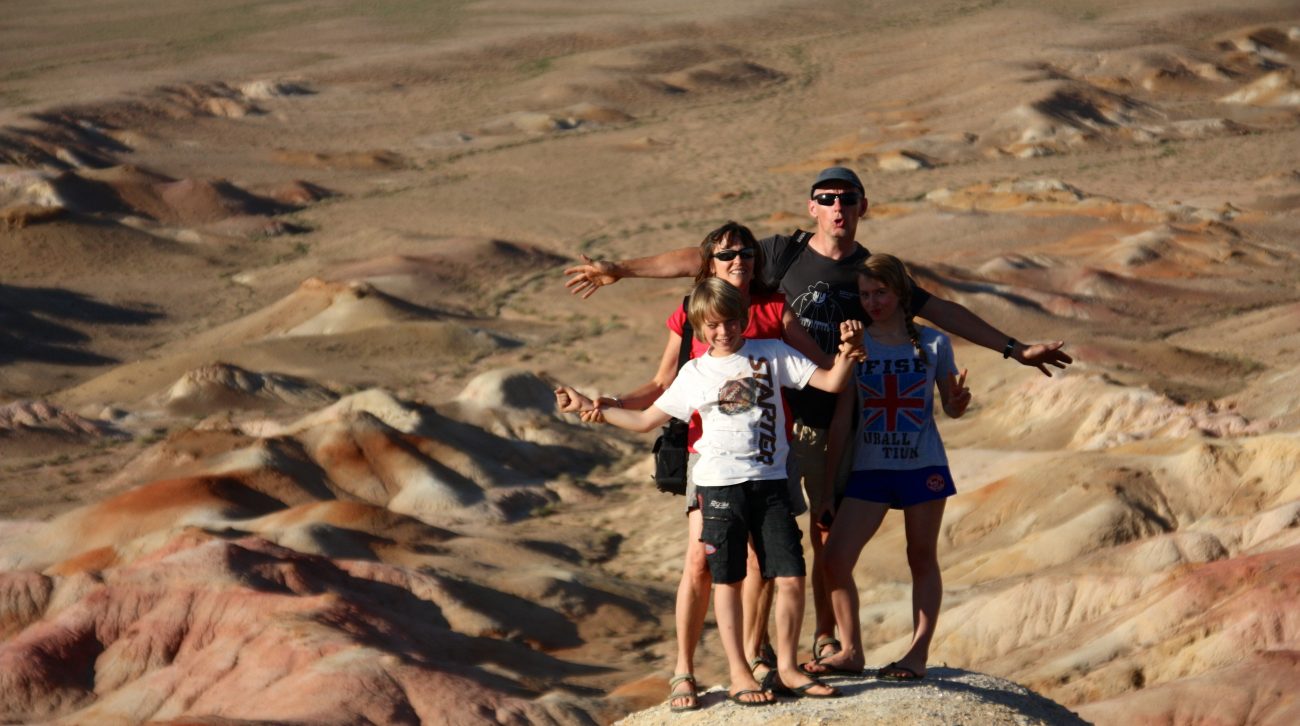
Today we leave the Gobi region and continue our journey to the Khangai range, the second largest mountain range in Mongolia. Here you will learn how to distinguish a family living in Khangai and Gobi. It will be a very special experience for you. Before coming to the Shuranga valley, we stop at the Horse Sanctuary complex. In this region, the Mongols prayed before the horse race. In 2008, the Horse Sanctuary complex was built. The monument of many horses won at the Naadam festival is immortalized here. The particularly famous monument of the Arvagar-Kheer horse is placed in the center.
Planned activities: Visit Horse shrine complex, to meet local’s lifestyle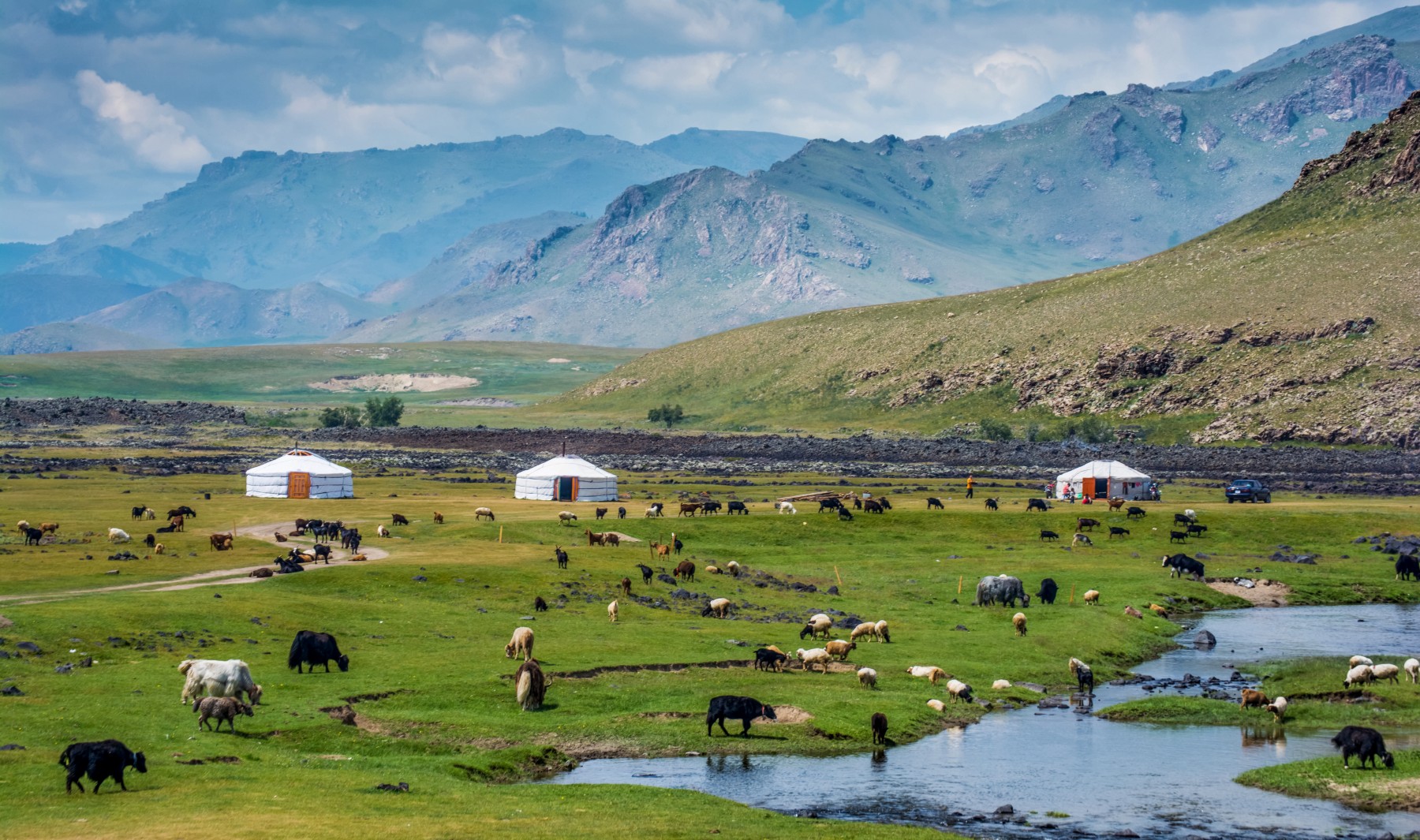
Lunch at a roadside restaurant.
Dinner and night with hosts in yurt.
Day – 9: Valley of Shuranga to The Eight lakes (Hiking in the Lake Khuis)
Breakfast; we start our hike from Shireet Hill which is 3329 meters above sea level, 350 to 529 meters from the level of Lake Shireet.
We leave for 3 days of walking between families to the Valley region of Orkhon. In this protected area the landscapes are magnificent and the places where we hike the facets change regularly.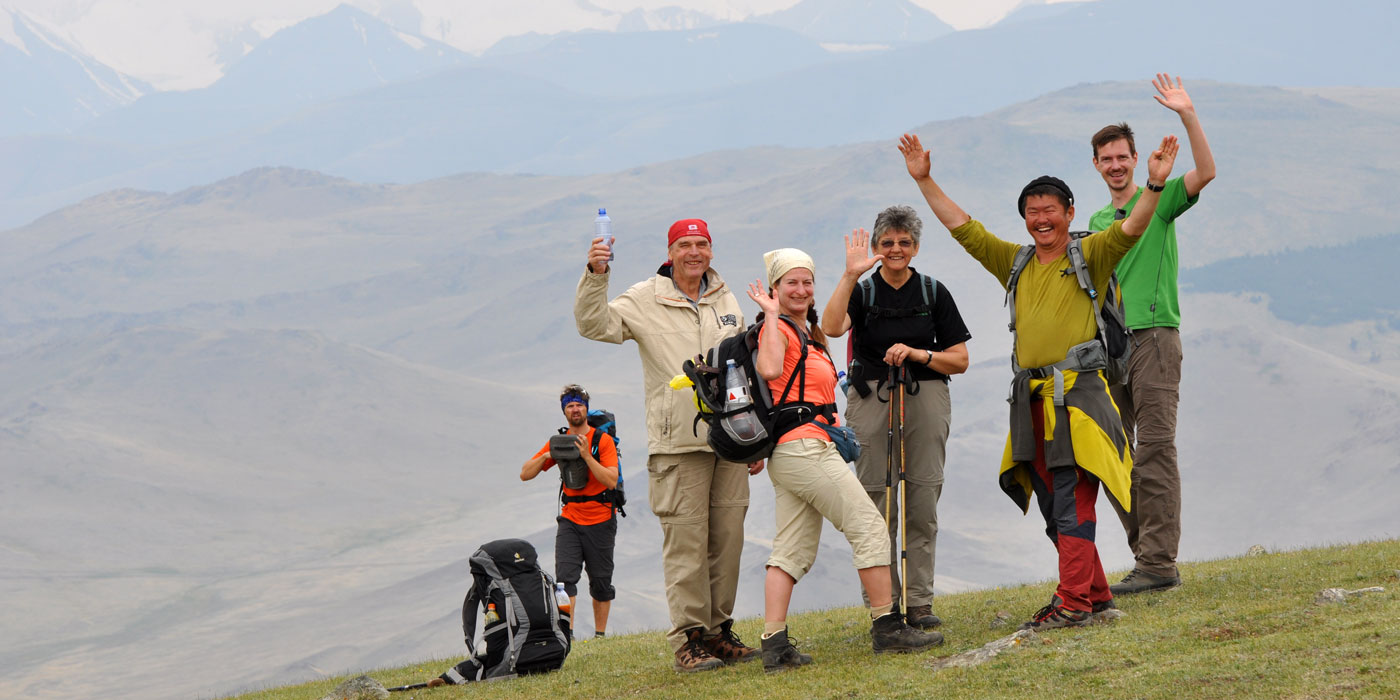
The Eight Lakes:
The Eight Lakes Nature Reserve lies high in the Khangai Mountains, Mongolia’s second largest mountain range. Barely accessible to vehicles, the nature reserve is being kept in a pristine condition, allowing the few visitors that do make the effort to climb up there to enjoy Mongolian nature at its best.
Eight lakes named Shireyat, Khaliut, Bugat, Haya, Huys, Mukhar, Doruu and Bayan-Uul, which are connected by groundwater. The distances between the lakes are 500 meters to three kilometers.
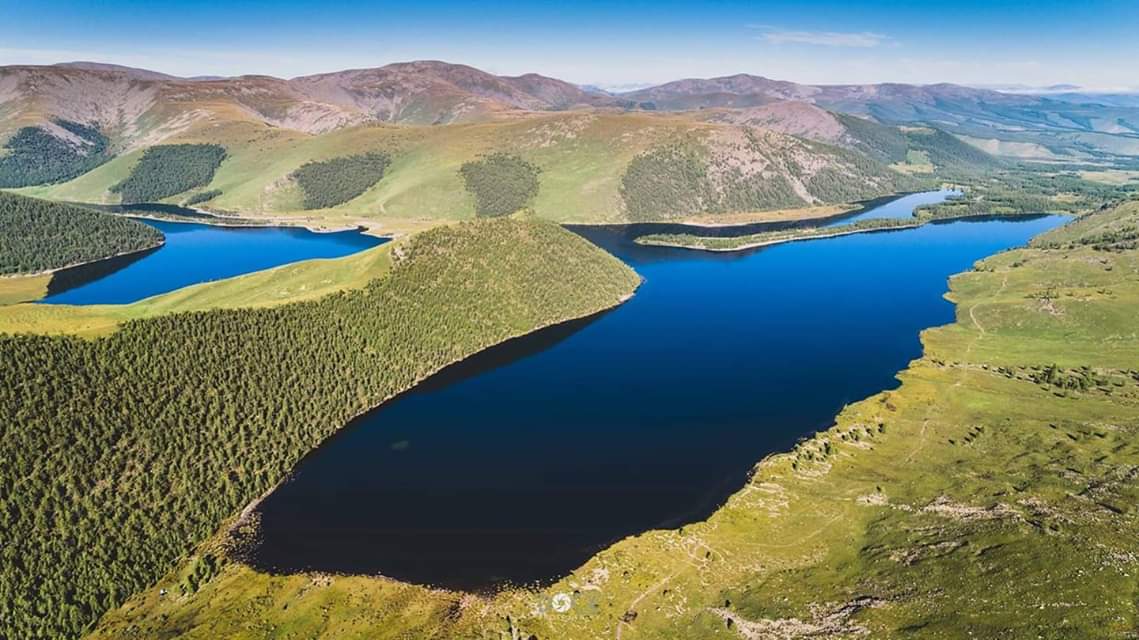 The first day of our hike begins at Shireet Hill. During our hike, we visit the three lakes which are the largest of the eight. We will arrive in a nomadic family who spends the summer near Lake Khuis. This place is known for its natural beauty.
The first day of our hike begins at Shireet Hill. During our hike, we visit the three lakes which are the largest of the eight. We will arrive in a nomadic family who spends the summer near Lake Khuis. This place is known for its natural beauty.
Planned activities: visit the Lake Bugant, Duruu, Shireet
Picnic lunch brought by our pack horses or our yaks, nothing to carry on the back, so that we can walk in obstacles!
This night, we will sleep in a “yurt of hosts” close to the yurts of our nomadic family.
The comfort is simpler and you will discover the real nomadic way of life …
Day – 10 The Lake Khuis to The Tsagaan Azarga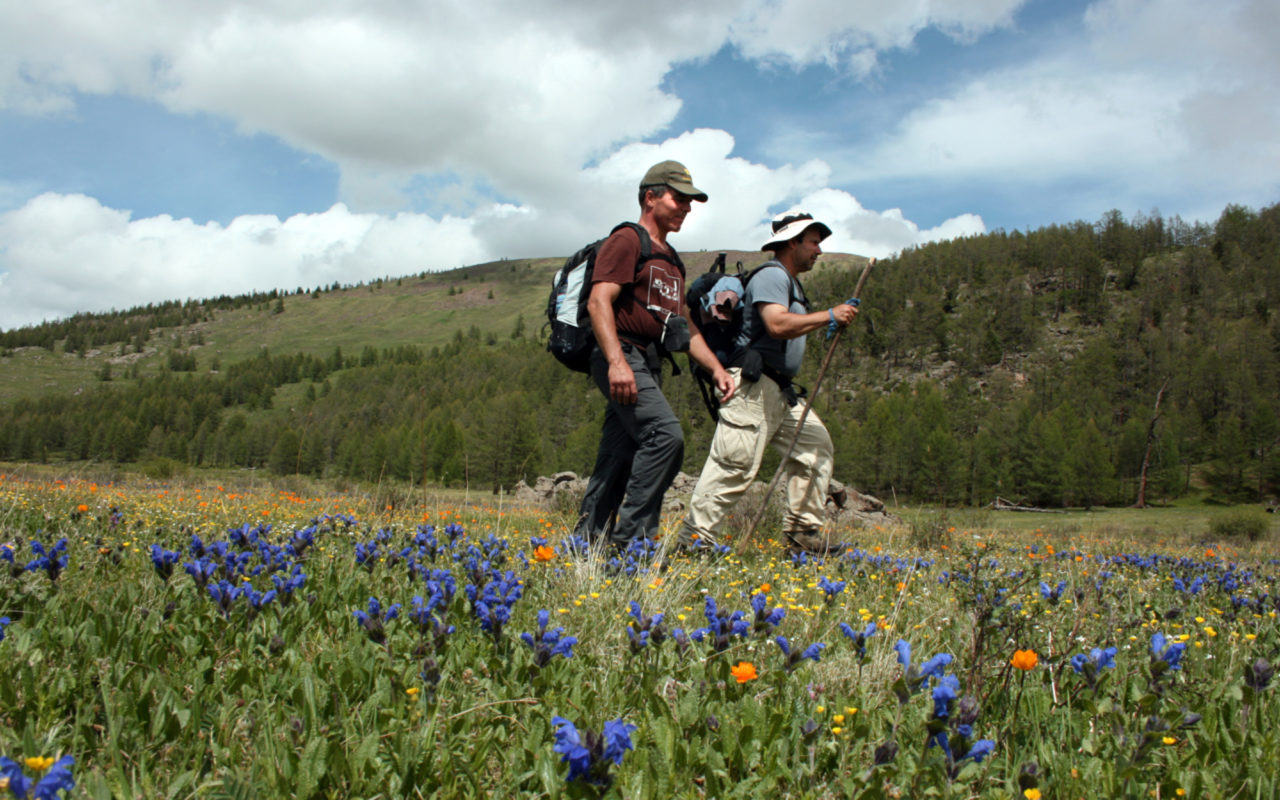
Breakfast; a whole new day begins and we are gradually heading towards the Orkhon valley. Every day, we hike in an exceptional and different nature. At the end of the afternoon we will arrive in a magnificent place called “Tsagaan Azarga” (White Stallion).
Picnic lunch brought by our pack horses or our yaks, nothing to carry on the back, so that we can walk in obstacles!
Planned activities: visit of Mount Tsagaan Azarga, Mount Tevsh covered with lava
This night, we will sleep in a “yurt of hosts” close to the yurts of our nomadic family.
The comfort is simpler and you will discover the real nomadic way of life …
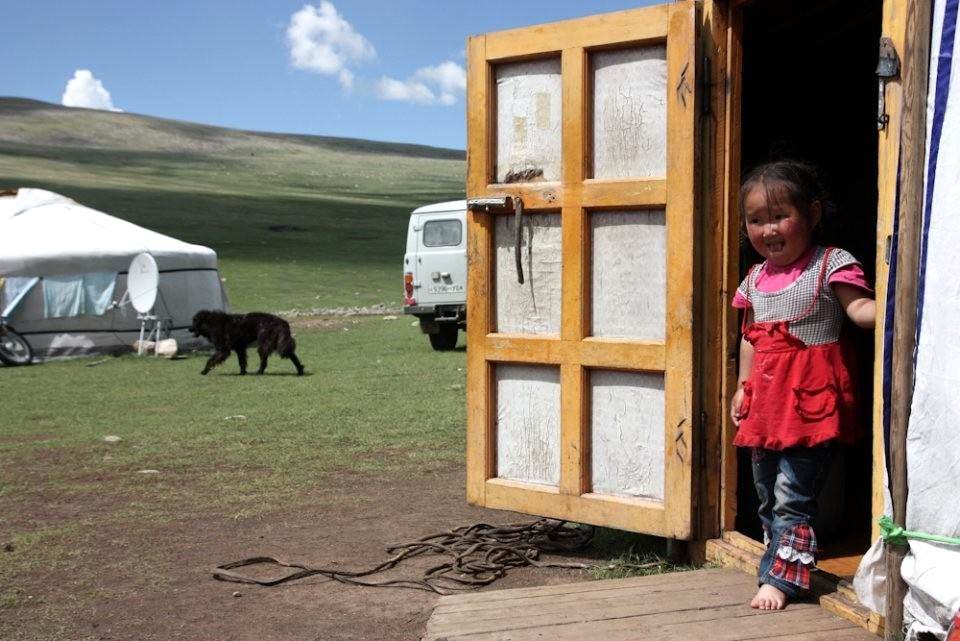
Day – 11 Tsagaan Azarga to Buurug
Today, we leave Naiman Nuur park with our pack animals to reach the Orkhon valley.
We climb through steep mountains and appreciate the ability of our pack animals!
Picnic lunch brought by our pack horses or our yaks, nothing to carry on the back, so that we can walk in obstacles!
We find our vehicles and settle in a tourist camp on the banks of the Boorog River.
Dinner and overnight at the camp of yurts (2 to 4 people per yurt, with single beds, showers in a separate building).
Day – 12 Buurug to Orkhon Falls (horseback riding)
Breakfast; we meet nomad breeders and horses who will be our companions for the next 3 days.
We start our first day on horseback in the mountains bordering the north of the Orkhon Valley.
Classified in 2004 as a UNESCO World Heritage Site as the cradle of nomadic Mongolia, the “Orkhon Valley Cultural Landscape“, covering an area of approximately 122,000 hectares, covers a vast area of grazing land stretching km long and 30 km wide on both banks of the Orkhon River.
Grasslands are still used today by nomadic pastoralists in Mongolia, and many families continue the traditional way of life. In the valleys and around the rivers are nestled yurts which shelter nomadic families. In the wild, herds of horses, yaks, sheep and goats move in these protected areas.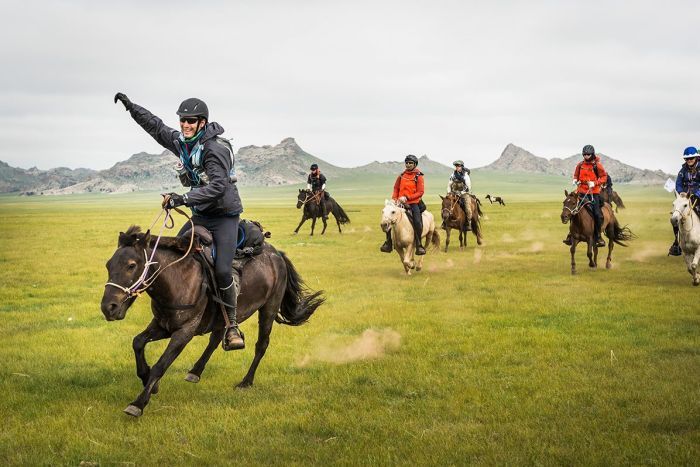
The Orkhon Falls are in fact the falls of the Ulaan Tsutgalan River. The river falls into a spectacular canyon formed after a volcanic eruption more than 20,000 years ago, forming a cascade 26 meters high and 5,5 meters wide.
The site is enchanted by the contrast between the whiteness of the moss and the black rock that forms the walls of the canyon. Down the walls to the foot of autumn, you will discover trees and flowers that take advantage of the abundance of water to grow.
Picnic lunch brought by our vehicles, nothing to wear on horses, so we can enjoy many gallops!
After each ride, we choose a quiet and sublime place for dinner and night.
Day – 13 Orkhon Falls to Tuvkhen Monastery (horseback riding)
Breakfast, we ride another day in the mountains of Khangai.
Picnic lunch brought by our vehicles, nothing to wear on horses, so we can enjoy many gallops!
At the end of the afternoon, we go up to the monastery of Tovkhon.
The monastery of Tovkhon dominates the Orkhon valley at 2400 m altitude.
Tuvkhen Monastery: Located on the border of Uvurkhangai and Arhangai, 40 km north-west of Khujirt soum and 50 km north of
Bat-Ulziit soum, situated on the hilly peaks of the high mountain of ‘Undur-Ovoot also called Shiveet-Ulaan. The mountains can reach up to 5 kilometers from the monastery. The first chief Lamaisme Bogd Guegueen Zanabazar was born in 1648, when he was 14 years old, interested in the unique natural beauty of this natural beauty, and in 1651 he built a stone house with a stone wall to practice meditation and called it “Dubkhan“. The name changed Tuvkhun.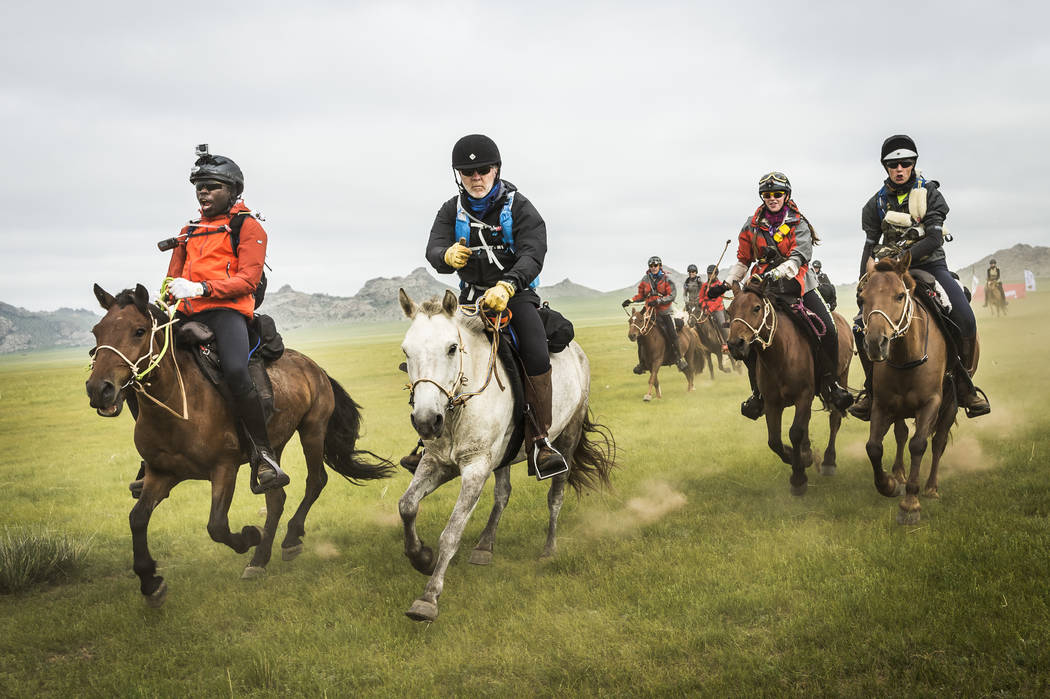
You have to climb up to the monastery, about an hour climb through a beautiful mountain forest. You can visit the temples and caves that are related to beliefs, such as that of a spiritual rebirth after a passage in a very narrow pipe dug into the rock.
The top view extends 360 degrees tens of kilometers beyond the mountain ranges surrounding the Orkhon Valley in long undulating waves, sometimes covered with dark forests, sometimes bordered by green meadows.
Dinner and overnight in bivouac
Day – 14 Tuvkhen Monastery to Kharkhorin 
Breakfast, we ride to the ancient capital of Mongolia.
Picnic lunch brought by our vehicles, nothing to wear on horses, so we can enjoy many gallops!.
It is our last day of ride, before visiting the largest monastery in the country “Erdene Zuu”, we leave our friends (the local guides) and our brave horses.
Karakorum (Kharkhoryn) is the ancient capital of the Mongol Empire, founded in 1235 by Ogödei, the son of Genghis Khan.
In 1260, Kublai Khan transferred the capital to Beijing. Karakorum was destroyed in 1388 by troops of the Ming dynasty. From its former glory remain simple turtle statues guarding the entrances to the city walls.
In 1585, Erdene Zuu was built just outside the walls of the ruins of the ancient capital after the introduction of Buddhism in Mongolia as a state religion. Stones from the ruins of Karakorum were used in the construction.
It is surrounded by a wall with 108 stupas. 108 is a sacred number in Buddhism, and it is also the number of pearls in a Buddhist rosary (mala).
The monastery was damaged in the 1680s, but was rebuilt in the 18th century and in 1872.
For centuries, Erdene Zuu has been the most important religious sanctuary in Mongolia.
In 1939, Communist leader Horloogiyn Choybalsan destroyed the monastery in a purge that resulted in the disappearance of hundreds of monasteries in Mongolia and killed over ten thousand monks.
There remained three small temples and the outer wall with the stupas; the temples became museums in 1947.
After the fall of communism in Mongolia in 1990, the monastery was given to the lamas and Erdene Zuu again became a place of worship.
The site was restored at the end of the century and has regained part of its religious aspect. Today, Erdene Zuu remains an active Buddhist monastery as well as a museum open to tourists.
We set up camp near the Orkhon river in a valley near Karakorum.
Dinner and overnight in tents.
Day – 15 Kharkhorin to Ulan Bator
Breakfast and early departure to Ulan Bator (5 – 7 hours drive – strongly depending on the condition of the roads).
Lunch and free time for shopping in stores downtown.
In the late afternoon, you will attend a show with traditional dances, music and songs from Mongolia, especially the amazing Khoomei.
The Khoomei is an overtone singing (throat singing) in which the singer produces two distinctively audible pitches at the same time, including a low pedal note, or drone, derived from the fundamental frequency of the vocal cord vibrations, and higher melodic notes that result when the singer’s mouth acts as a filter, selecting one note at a time from among the drone’s natural overtone series pitches.
The sound is reminiscent of the Jew’s harp.
This type of song is recorded in Intangible Cultural Heritage of Humanity by UNESCO in 2010.
Dinner downtown and overnight at a 3* hotel.
Day – 16 Return Home
Breakfast (depending on your flight schedule) and transfer to airport for your flight back home.
No lunch included as most flights depart in the morning.
INCLUDED
- Airport / hotel / airport transfers
- 2 nights in a ** hotel in Ulaanbaatar, breakfast included
- Full board during the excursion
- Meal at Ulan Bator
- Mineral water
- 2 nights in a comfortable yurt camp with hot shower
- 4 nights homestay, in guest yurt
- 7 nights in a tent
- Travel in 4×4 or mini bus + driver
- Gasoline
- English speaking guide
- Cook for groups> 4 participants
- Horse riding
- Grooms
- Camel ride
- Local horse guides and camel guides
- Entrance fees to the parks and museums mentioned
- Traditional show
- IRIDIUM satellite phone
- Kitchen equipment (mess tent, camping tables and chairs) and for sleeping (tent, sleeping bag, ground mattress), sanitary tent
NOT INCLUDED
- International transport
- Passport & Visa Fees
- Repatriation insurance
- Travel insurance
- Extra drinks / alcohols
- Phone calls
- Any excursion not mentioned in the program
- Baggage supplement if you are carrying more than 15Kg (hold and cabin baggage combined)
